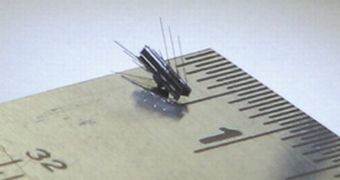Only a few years ago, the idea of having small robots introduced into their body made people think they were the victims of a sci-fi practical joke. But that's no longer the case, as several hospitals in the United States and Japan already employ such technologies, using massive robots such as the daVinci in collaboration with very small ones, which can navigate veins and arteries, and provide a clear picture of what is going on inside the patient's body. In addition, during surgery, these robots become very useful and make surgeons more focused on their work, as they no longer have to watch useless details.
One of the most important advantages of small robots is the fact that they only need a very small incision to enter the body, after which time they can be manipulated via the use of magnets placed outside the body. They align themselves with the waves of the magnets, so moving the magnets in various positions forces the tiny “doctors” to move as well. Intricate surgeries that would otherwise be very invasive now become a lot easier, which means that survivability rates improve.
"There's less blood loss as the system allows surgery to be more precise," explains Kunihiko Yoshioka, associate professor of urology at the Tokyo Medical University Hospital, in Shinjuku Ward, Tokyo, talking about the way the daVinci system works. Weighing in at about 1 ton, the massive robot uses its wrist-like, powered arms to perform the surgery, while the real doctors stand behind a massive terminal, featuring screens and control levers that allow them to operate the massive equipment flawlessly.
On the other hand, Makoto Nokata, who is an associate professor at the College of Science and Engineering, at Ritsumeikan University in Kusatsu, the Shiga Prefecture, says that he envisions a robot, no larger than a fingertip, which could be left inside the body for extended periods of time.
He says that current capsule endoscopes, which only pass through the body, are not suited for long-term observations, and that his devices will allow for a noninvasive way of analyzing problems every time the patient comes in complaining about something.
"With the robot inside, patients don't need incisions when further surgery or tissue examination become necessary," he says.
Another Japanese scientist, Naoki Suzuki, the director of the Institute for High-Dimensional Medical Imaging at the Jikei University School of Medicine, in Komae, western Tokyo, created a snake-like robotic device that is capable of conducting surgery in the stomach and the abdomen. The medical robot is inserted via the mouth and can cut its way through the stomach using an electron scalpel. Tests on pigs managed to yield successful results, and human trials are scheduled next.

 14 DAY TRIAL //
14 DAY TRIAL //